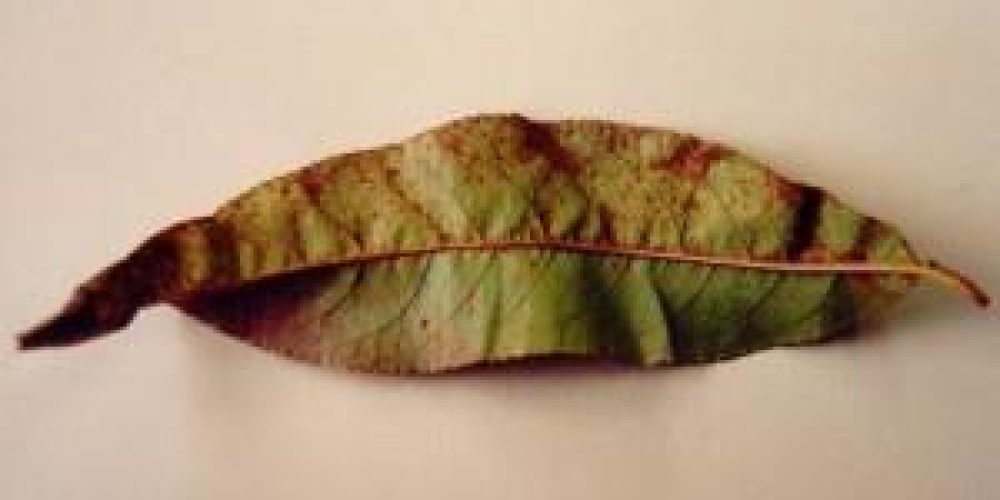Table of contents of the article
ToggleAlmond rust is a fungal disease that affects bolls, resulting in foliage decline and reduced productivity. This article from the “WORLD OF PLANTS” website discusses how to identify this disease and ways to prevent it.
Symptoms of Almond rust
- Name of the disease: Rust of tonsils
- Scientific name: Tranzachelia discolor
- Disease family: This disease affects peaches, apricots, peaches and almonds
Infected leaves usually appear with reddish to dark brown pustules on the lower surface (as shown in the picture). At the beginning of the disease, small yellow spots form on the upper surface. Their color gradually changes to a bright yellow color, and urinary pustules appear on them later. Finally, the telic spores form and are colored. Blackish brown, the severity of the infection leads to the fall of the leaves and the weakening of the plant. The damage may not reach the fruits because they have already been harvested, and the damage is limited to the general weakness of the tree in terms of the leaves falling early.
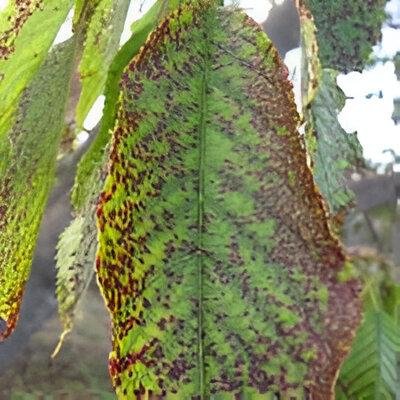
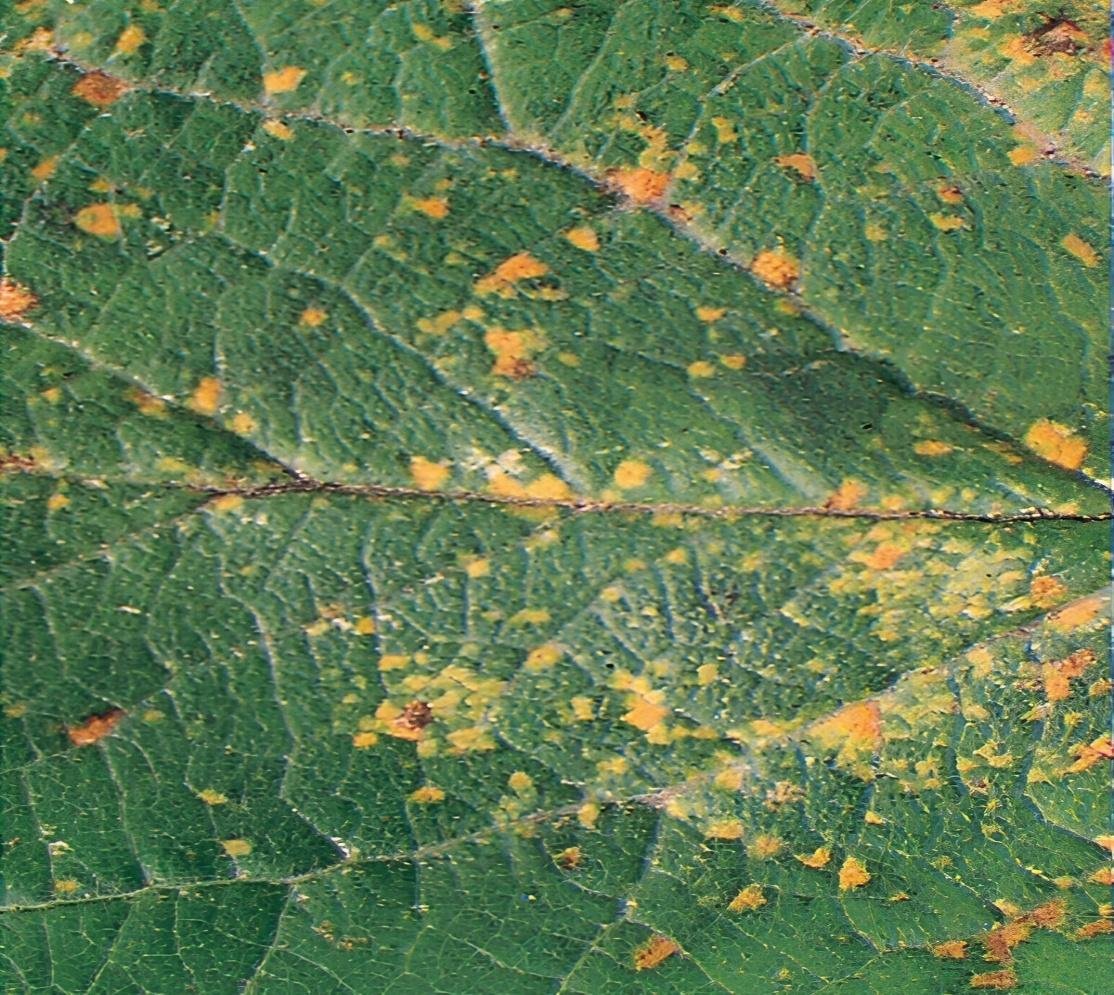
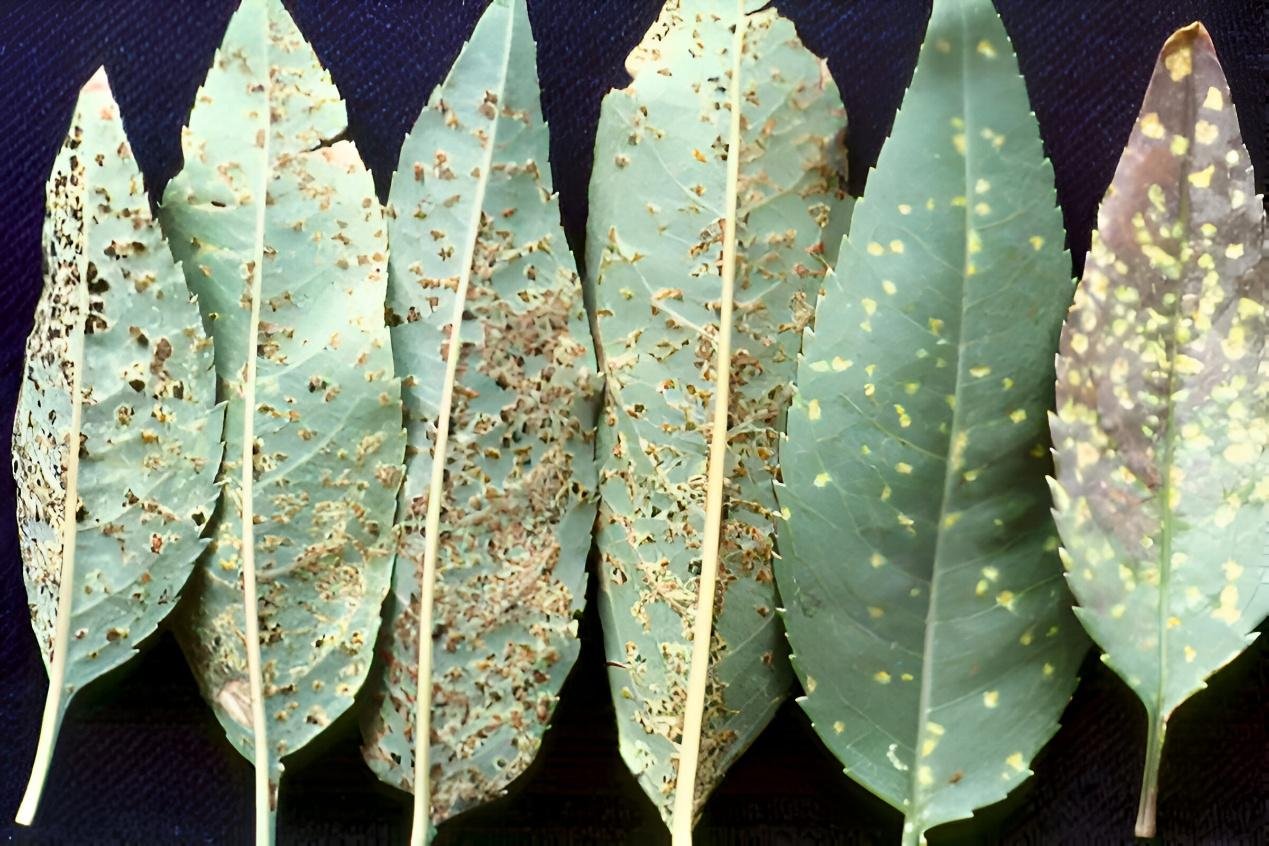
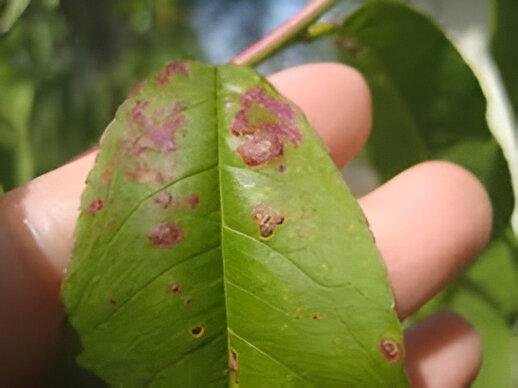
Causes of tonsil rust
It is caused by the fungus Tranzachelia discolor
Suitable conditions for the spread of Almond rust
The development of the disease requires warm, humid weather. The severity of the disease increases on trees planted in poorly drained lands.
Development cycle of Almond rust
The type of fungus is a long-cycling basidiomycete fungus. The uretic phase and the teletic phase are on trees with stone cores, while the weeping phase and the acidic phase are on anemone plants. The disease is found in the remains of infected and fallen plants at the end of the season in the form of teletic spores, which are a source of primary infection.
Losses from the spread of Almond rust
Leaves begin to fall early, which leads to the fruits being exposed to the sun's rays. This causes severe damage to the fruits. Damage from this disease occurs most frequently in the moderately hot and humid summer.
Strategy to control Almond rust
It is very important to continue spraying even after harvest in order to protect the leaves.
Preventive measures to prevent the occurrence of Almond rust
Use low-allergenic or rust-resistant varieties.
Destroying and burying cereal plants that have germinated after harvest helps reduce the causative agent of the initial disease. Treatment of the pest depends on a preventive treatment with a fungicide. In dry areas, the infection is minimal, so the trees must be monitored. If the pest appears, we fight it. However, in wet areas, it must be Treatment is preventive.
Recommendations for organic and chemical control of Almond rust
- Collect infected leaves and burn them away from the field.
- Getting rid of anemone plants near almond trees.
- Spray the trees when symptoms appear with Bordeaux mixture or copper sulphate, and repeat the spraying twice, with 3 weeks separating the first and second spraying.
In conclusion, we would like to note that we, at the world of plants website, offer you all the necessary services in the world of plants, we provide all farmers and those interested in plants with three main services::-
- Artificial intelligence consulting service to help you identify diseases that affect plants and how to deal with them.
- Blog about plants, plant diseases and care of various crops ... You are currently browsing one of her articles right now.
- An application that provides agricultural consultations to clients, as well as a service for imaging diseases and knowing their treatment for free – Click to download the Android version from Google Play Store، Click to download the IOS version from the Apple App Store.
References:
Garden and home pests - University of Jordan
PEACH RUST (TRANSCHELIA SPP.) – University of Florida
Brown rust – profert




